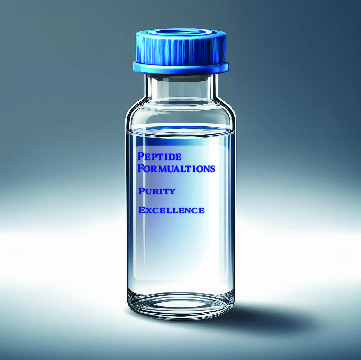Regenerative and Repair Medicine: Mechanisms, Key Areas, and Future Directions
Regenerative and repair peptides are short chains of amino acids under investigation for their potential to promote tissue repair and regeneration. These peptides can influence various biological processes involved in healing and regeneration. Here’s an overview of their mechanisms and notable examples:
Mechanism of Action
Cell Proliferation: Regenerative peptides can stimulate the proliferation of various cell types, including stem cells and progenitor cells, to support tissue repair and regeneration.
Wound Healing: Some peptides enhance wound healing by promoting collagen synthesis, angiogenesis (formation of new blood vessels), and epithelialization (restoration of the skin’s surface).
Anti-Inflammatory Effects: Peptides with anti-inflammatory properties can reduce inflammation at injury sites, which accelerates the healing process and prevents chronic inflammation.
Cellular Protection: Regenerative peptides can protect cells from damage caused by oxidative stress or other harmful factors, supporting the survival and function of damaged tissues.
Examples of Regenerative and Repair Peptides
BPC-157 (Body Protection Compound-157): Known for its potential to accelerate healing of tissues such as tendons, muscles, and ligaments, BPC-157 promotes angiogenesis and collagen formation.
Thymosin Beta-4: This peptide is involved in tissue repair and regeneration, particularly in wound healing and the repair of damaged tissues. It enhances cell migration and proliferation.
IGF-1 (Insulin-Like Growth Factor-1): IGF-1 supports cell growth and repair, playing a crucial role in muscle regeneration and bone repair. It also has potential benefits for aging and injury recovery.
Cenp-1: An experimental peptide showing promise in regenerating cartilage and other connective tissues, with potential applications in osteoarthritis and joint repair.
Research and Applications
Clinical Trials: Many regenerative and repair peptides are undergoing clinical trials to assess their efficacy and safety in various contexts, such as wound healing, tissue repair, and anti-aging treatments.
Innovative Therapies: New formulations and delivery methods are being explored to enhance the effectiveness of these peptides and ensure targeted delivery to injury or repair sites.
Challenges and Considerations
Side Effects: Potential side effects, including allergic reactions or unintended cellular effects, need careful monitoring. Ensuring the safety of regenerative peptides is crucial for their clinical application.
Long-Term Efficacy: Assessing the long-term benefits and sustainability of tissue repair and regeneration using these peptides is essential for establishing their effectiveness and safety in clinical settings.
Regenerative and repair peptides offer promising avenues for enhancing tissue healing and regeneration. Continued research is necessary to fully understand their capabilities and address any challenges in their development and application.

